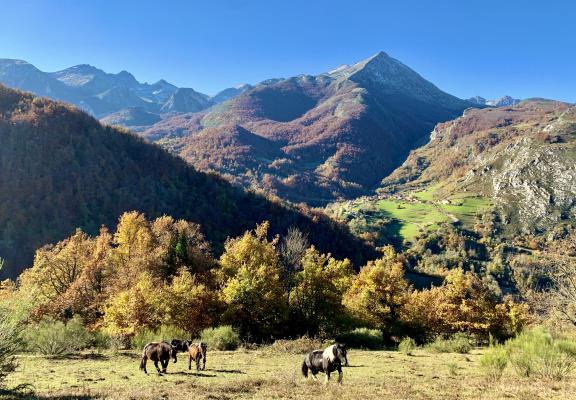Cortes
Cortes is a small mountain town in the council of Quirós, in the southwestern area of the Principality of Asturias. It is located at 840 m. altitude above the Lindes river valley and the confluence on it of the Bueseca, at the foot of the imposing Peña Rueda massif, one of the most important peaks in the region that is frequently described by mountaineers as a great pyramid of about twelve square kilometers of base.
Green pastures, wooded mountains and upright rocks, white with snow on their peaks, are the natural setting that surrounds this privileged enclave in the heart of the Las Ubiñas – La Mesa Natural Park.
Belonging to the parish of Santo Tomás de Lindes, it is possibly one of the best preserved towns in Asturias, where an authentic rural environment is maintained and where its fifty inhabitants still carry out livestock farming (cattle, horses, sheep, pigs and poultry), agriculture (cultivation of spelled, etc.) mainly for self-sufficiency and crafts, at the same time that it has managed to equip itself with welcoming facilities for the visitor who comes seduced by any of its attractions.
Being the town of Cortes a small mountain population center, it does not have shops, although the merchants, equipped with large vans, visit it daily to dispense all the basic products to whoever wants it, such as bread, milk, eggs, pastries. , etc. Also, suppliers of other products, such as fruits, fish, various frozen foods, etc., come several times a week. Of course, in Bárzana, the capital of Quirós, which is only 11km away. from the town, there are several small shops where you can stock up on everything you need as well as find all kinds of services: health center, pharmacy, veterinary service, civil guard, bank, post office, mechanical workshop, taxis, cafeterias, various shops, tourist information, swimming pools , etc.
The popular architecture of its houses stands out in Cortes, built on two floors with large stone blocks, rustic double doors and colorful wooden corridors, as well as the proliferation of that traditional Asturian construction that is the hórreo or the bread basket.
But there are also several buildings and places of a public nature that due to their peculiarities or careful restoration it is necessary to review:
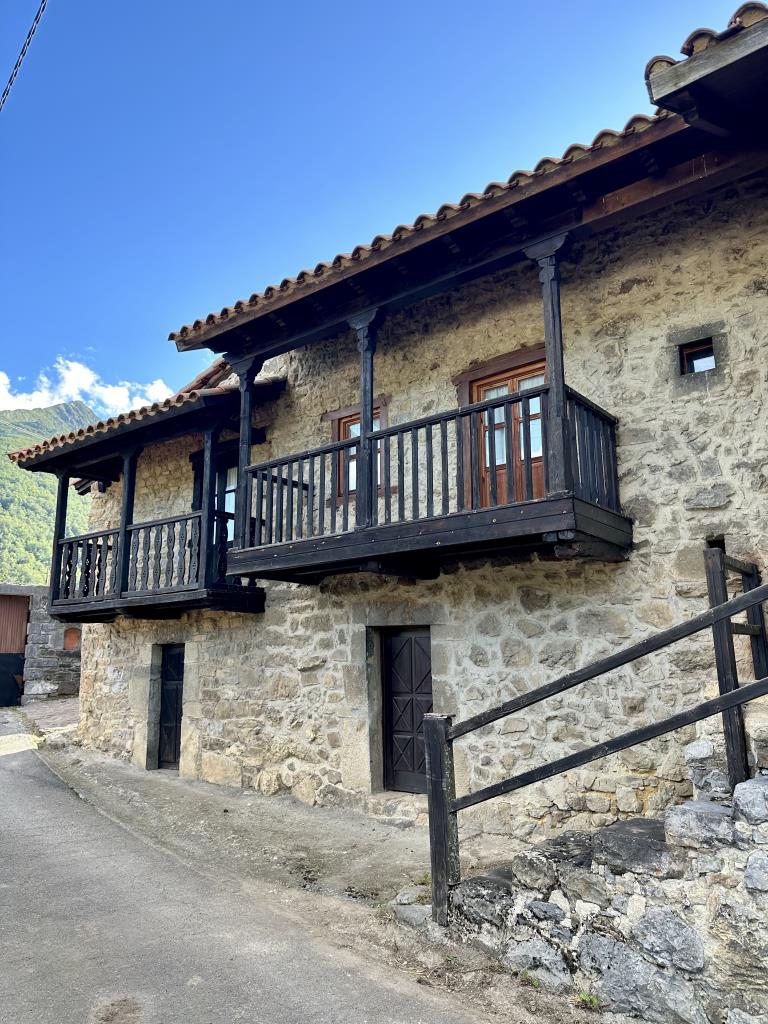
The Bitrhplace of San Melchor
Cortes is the birthplace of San Melchor, protomartyr and the only Asturian saint, where his birthplace is still preserved, a humble two-story house with a traditional typology. Currently, the house and several attached buildings have been rehabilitated to expand a space that has been set up as a missionary reception center and that fosters the figure and spirit of the saint.
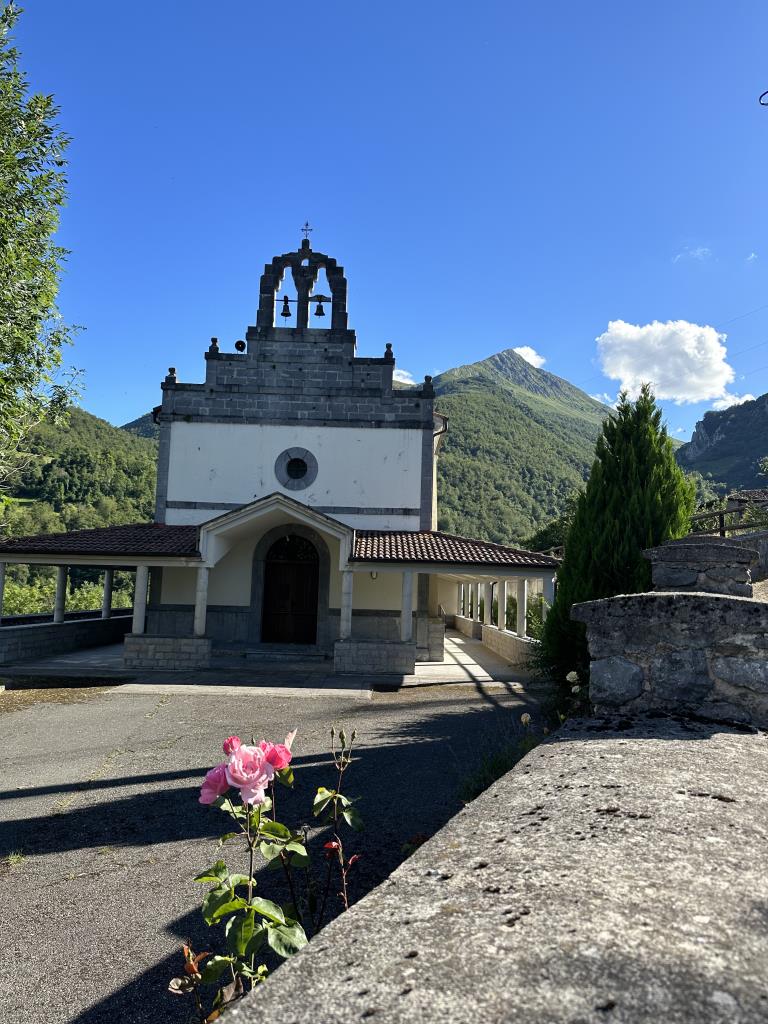
The church Sanctuary of San Melchor
Inaugurated by the Archbishop of Oviedo Carlos Osoro on August 31, 2003, coinciding with the town's celebrations in honor of his saint, it is the result of 330,000 euros and two years of work on the old church of Cortes to provide the town with the one that the Asturian proto-martyr was born in a worthy sanctuary that since then has been presided over by his carving and relics.
The old church dated from 1911, and it is believed that it was built on top of an old small chapel dedicated to San Román that, at the initiative of Don Juan, father of San Melchor, had been restored to celebrate masses in the same town.
With a single nave and a rectangular floor plan, the building is modern, simple and welcoming inside. On the outside it has followed the guidelines of traditional Asturian rural ecclesiastical architecture, and preserving the façade of the old church, a portico has been added that almost completely surrounds it.
The adjoining garden area is fenced and together with the fountain that has also been installed, it constitutes an attractive and welcoming resting place for visitors and pilgrims.
The Cross of
San Melchior
La Cruz de San Melchor is the name by which a place is known on the slope of Mount Gorbizal, some two hundred meters from the town, and where a wooden cross is installed in honor of the saint born in Quirós. This location, which was surely frequented by San Melchor in his childhood, is a magnificent viewpoint from which to observe the Las Ubiñas - La Mesa Natural Park, the Aramo mountain range and the Quirós valley.
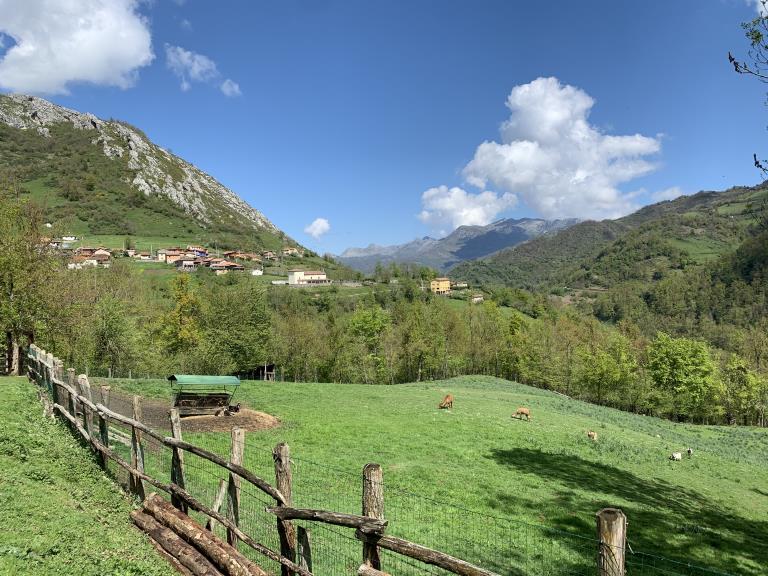
The School
It is a small stone building with a square floor plan that has recently been recovered for its neighbors. The boys and girls of the town were educated there until the decline in students forced its closure in 1978.
Laundry
The laundry room with its fountain is a place with a certain magical atmosphere that evokes the times when the absence of running water in private homes forced women to go there to do their laundry, which also led to its becoming a socializing space for lively chats.
The Water Mill
At the exit of the town in the direction of Lindes, in the middle of a wooded landscape suitable for the development of any scene from Asturian mythology, there is an old restored mill that used the water of the stream on which it was built to grind wheat and spelt
Recreational Area
At the entrance of the town, at the foot of Peña Rueda and with views of the Lindes river valley, there is an extensive area for the rest and enjoyment of the visitor that has grills, tables, benches and a fountain, as well as parking in the same building. around.
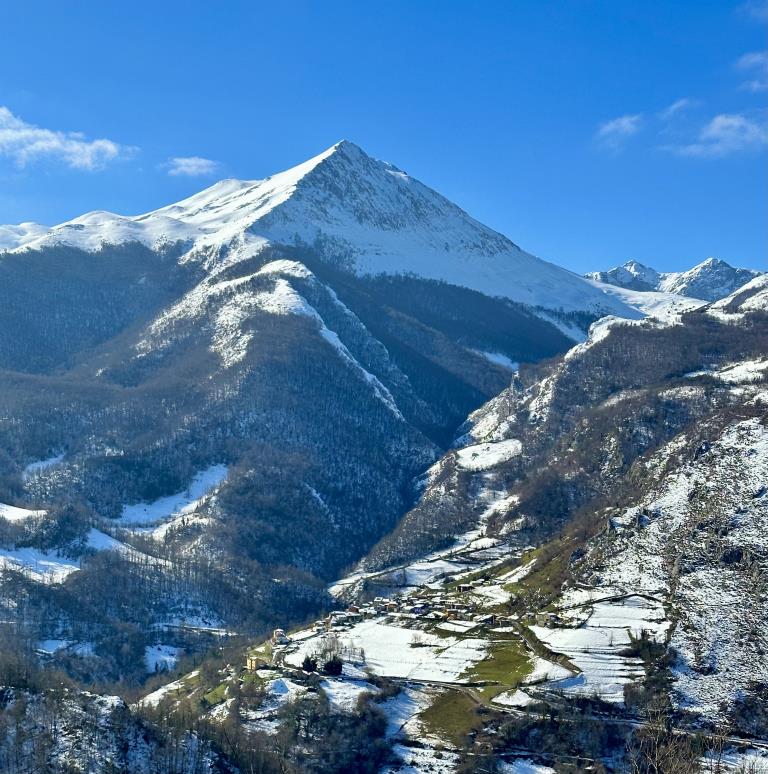
Gold Pit
It is an old mining well, located 1 km. de Cortes, from which the residents remember that gold was extracted in the past. The well is not accessible today, but from its location there is a magnificent panoramic view of the town and the Lindes river valley.
Itinerary:
From the upper part of the town, continue to the left along the path to the cemetery. Once past, continue along an ascending path to the right. Shortly after, at a crossroads, continue to the left along a very steep path until you reach some meadows with a stable, Los Praones; the well is located a few meters down a path to the left of the path.
Once in it, it is not convenient to forget the due precautions to take given the danger that every well represents, not being possible to enter it.
The estimated time to carry out this excursion, round trip, will be an hour and a half, with an approximate drop of 200 m.
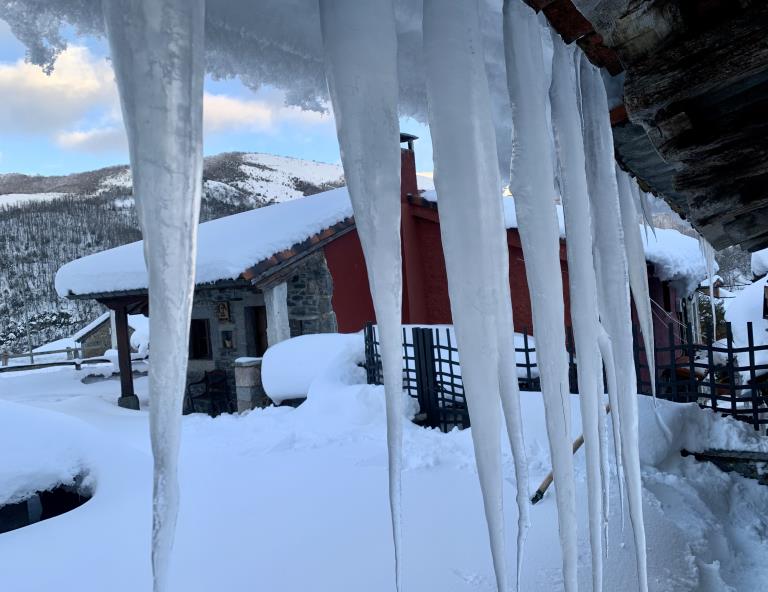
Distance to some places of interest
Bear House (Proaza): 26 km. (25 min.)
Santa Cristina de Lena, pre-Romanesque church (in Lena): 29 km. (28 min.)
Cueva Huerta, Natural Monument (in Teverga): 32 km. (30 min.)
Prehistory Park - Millennial Attraction (in Teverga): 35 km. (40 min.)
Puerto de Pajares (Winter Ski Station Valgrande - Pajares): 56 km. (59 min.)
Oviedo, capital of the Principality: 59 km. (45 min.)
Somiedo, Natural Park: 60 km. (56 min.)
Mining Museum (in El Entrego): 60 km. (50 min.)
Cider Museum (in Nava): 77 km. (60 min.)
Gijon: 90 km. (60 min.)
Aviles: 93 km. (64 min.)
Several nearest beaches: 100 km. (70 min.)
Jurassic Museum (in Colunga): 108 km. (80 min.)
Cudillero, fishing village: 117 km. (80 min.)
Covadonga and Los Lagos (in Cangas de Onís): 126 km. (100 min.)
Muniellos Forest (in Cangas del Narcea): 128 km. (120 min.)
The water of Cortes... in Oviedo
Through an enormous tunnel that ends in the neighboring council of Riosa, and whose difficult construction in the fifties resembled a pharaonic work, the water from the healthy springs of Cortes is captured to contribute to the supply of the city of Oviedo. One of the dams on the Bueseca stream can be seen on the way out of town towards Lindes.
Water in the Quirós council is an abundant element that is also used in the Valdemurio reservoir and in the Santa Marina and Las Agüeras mini-hydroelectric plants.

